ECTI’s Full Stack Web Development Course in Pune with Placement

4.9/5
Java Full Stack Reviews
Hurry Up!
batch is starting soon...
only 5 seats are available for this batch
Advantages
- Lifetime placement assistant till you get a Job
- Unlimited placement calls
- Affordable cost
- 10+ years industry experienced trainers

10000+ Happy Students.
Looking to build a career in web development? ECTI’s Full Stack Web Development Course in Pune with Placement is designed to equip you with the latest front-end and back-end technologies. This industry-focused program offers hands-on training, real-world projects, and expert mentorship to help you become a job-ready full-stack developer. Plus, with our dedicated placement assistance, you can step into top IT companies with confidence.
Hands-On Learning Front-End course Back-End course Flexible Timing Real Time Project Expert Trainers Reasonable Fees Certifications Placement Support 23 years Learning exp

4.9/5
Full Stack Web Development Course Reviews
Hurry Up!
batch is starting soon...
only 5 seats are available for this batch
Advantages
- Lifetime placement assistant till you get a Job
- Unlimited placement calls
- Affordable cost
- 10+ years industry experienced trainers

10000+ Happy Students.

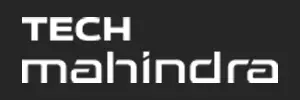
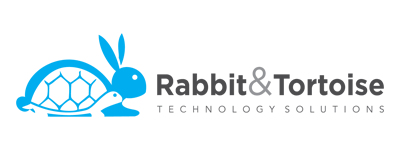
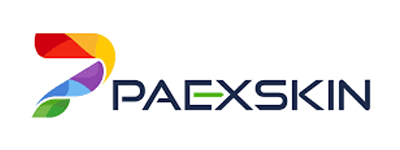
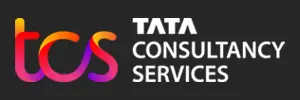
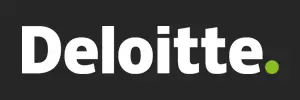

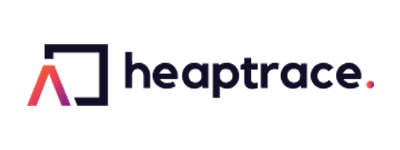
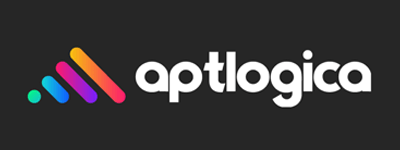
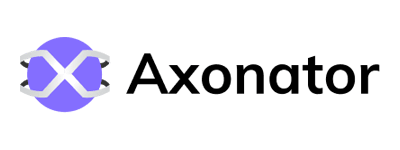
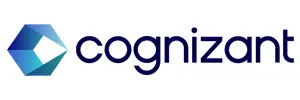

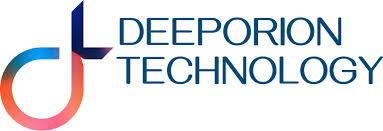




Sahil Sayyad
Consociate Solution Pvt Ltd
Front End Web Developer
January, 2025
Vishwakarma College of Arts, Commerce and Science
M.Sc (Computer Science) - 2023

Sakshi Vijay Malvadkar
Capgemini
Software Developer
December, 2024
Modern Education Society's Wadia College of Engineering Pune
BE - 2024

Piyush Yadav
Future Tech Design Solutions Pvt. Ltd. Gurugram.
Digital Modeler Class A
December, 2024
University of Engineering and Management, Jaipur (Rajasthan)
B. Tech (Mechanical Engineering) -2021

Shubham Sawalkar
Studio Key designs LLP
CAS Modeller
September, 2024
Symbiosis Skill & Professional University
B.Tech.(Automtion ) - 2021
Master Web Development with the Best Web Development Course in Pune
Enroll in the best web development classes in Pune at ECTI and gain comprehensive skills to create dynamic, responsive, and interactive websites. This web development course in Pune with placement covers essential front-end coding and back-end coding technologies, including HTML5, CSS3, Bootstrap, JavaScript, jQuery, and React.js, empowering you to build professional web applications and single-page applications (SPAs). With hands-on projects like portfolio websites, company websites, and interactive apps, you’ll be industry-ready in no time. Learn from experienced trainers, leverage a supportive learning environment, and elevate your career with full-stack developer courses in Pune, tailored to current industry trends. Secure your future with ECTI’s web development courses in Pune today!
Gain in-demand web development skills with our comprehensive course, guided by industry experts with over 23 years of experience. Build a professional portfolio with hands-on projects, covering technologies like HTML, CSS, JavaScript, and React.js. Enjoy flexible learning options, affordable fees with EMI, and lifetime job assistance, including mentorship, interview prep, and placement support to kickstart your career in top IT companies.
Key Features of Our Web Development Training Course

Certificate of Completion
Receive a shareable certificate upon successfully completing the course.

Flexible Learning Options
Choose between online or offline classes to suit your schedule.

No Prior Experience Required
Designed for beginners, intermediates, and advanced learners, catering to all skill levels.

Comprehensive Training
300 hours of in-depth learning, including real-time projects and practical sessions.

Expert Guidance
Personal mentorship and classroom training led by industry professionals with 23+ years of experience.

Job-Ready Skills
Learn 20+ in-demand tools and skills through 10 lesson-end and 4 phase-end projects.

Affordable Fees with EMI Option
Gain premium skills without breaking the bank.

Lifetime Job Assistance
Benefit from interview preparation, resume building, and placement support.

Interactive Live Classes
Engage in 8X higher interaction with expert trainers in live online sessions.

Industry-Relevant Projects
Apply your skills through practical assignments, internships, and graded quizzes.

Proven Track Record
Join 2000+ learners and 100+ completed batches with a 100% success rate.

Cost-Effective Training
Gain skills taught by top companies at an affordable price.
Why ECTI?
Lifetime Job Assistance
With our Lifetime placement assistant courses, you can achieve your career goals.

Cost Effective
We know how much money you need to invest in getting technical knowledge. Thus we have made sure the courses we provide are not just the best but also absolutely cost effective.
Industry Experts Lectures
With our Lifetime placement assistant courses, you can achieve your career goals.
Free Interview Training
Interview technique is a major hurdle for students trying to get a job. At Envision, we ensure your development.
Mock Interviews
We also make sure that a fresher isn't a fresher when it comes to his interviews from experts and people actually working in HR at various renowned companies.
Most Updated Syllabus
We are proud to mention that our syllabus is updated every quarter.

Complete Website Development syllabus
Our Website Development Course equips you with essential skills to design and develop dynamic, responsive, and interactive websites. This course covers the fundamentals of web technologies and progresses into advanced frameworks and tools like ReactJS. Whether you’re a beginner or someone looking to refine your web development expertise, this program provides hands-on training to ensure proficiency in creating professional-grade websites.
Key Highlights:
- Foundational Training: Learn the essentials of HTML, CSS, and JavaScript for building web pages.
- Responsive Design Mastery: Create mobile-first, adaptive designs using Bootstrap and advanced tools.
- Interactive Web Development: Gain expertise in ReactJS and JQuery to add functionality and interactivity.
- Career-Ready Skills: Practical projects and industry-aligned curriculum ensure job readiness.
Begin your web development journey by mastering the building blocks of the web. HTML and CSS form the foundation of every website, helping you create visually engaging and well-structured web pages.
Key Topics:
- Building semantic web pages with HTML5.
- Crafting styles and layouts using CSS3.
- Introduction to Flexbox and CSS Grid.
- Accessibility and SEO-friendly coding practices.
Bootstrap simplifies the process of creating responsive and mobile-first web applications. This module ensures you can design websites that look great on any device.
Key Topics:
- Understanding Bootstrap’s grid system.
- Designing and customizing reusable components.
- Creating responsive navigation bars and forms.
- Using Bootstrap utilities for faster development.
Enhance your web pages with interactivity and functionality using JavaScript and JQuery. Learn how to manipulate web elements, handle events, and create seamless user experiences.
Key Topics:
- Introduction to JavaScript syntax and functions.
- DOM manipulation and event handling.
- Simplified scripting with JQuery.
- Integrating AJAX for dynamic content loading.
ReactJS enables developers to build fast, scalable, and dynamic web applications. This module focuses on React’s component-based structure for creating modern web interfaces.
Key Topics:
- Fundamentals of React and JSX.
- Managing state and lifecycle methods.
- Creating single-page applications (SPAs).
- Using hooks for advanced state management.
Learn how to integrate AI tools into front-end development to create intelligent, user-friendly applications. This module introduces the basics of AI in web development.
Key Topics:
- AI-enhanced user interfaces.
- Using AI APIs for data insights and automation.
- Building chatbots and recommendation systems.
- Incorporating AI tools into existing web frameworks.
Web Development Certification Course
Kickstart your career as a web developer with our Web Development Professional Certification Course in Pune. Designed for beginners and experienced learners alike, this program covers essential technologies like HTML, CSS, JavaScript, Bootstrap, jQuery, React.js, and more. Through 10 comprehensive courses, you'll gain hands-on experience by working on real-world projects to build a professional portfolio. Showcase your skills to potential employers, earn an industry-recognized certification, and unlock career resources to secure a job in the highly in-demand field of web development. Whether you’re aiming to build responsive websites or master full-stack development, this course ensures you’re job-ready with cutting-edge skills.

Placement Process for Web Development Courses in Pune
Enroll in our Web Development Course in Pune and gain the skills needed to secure your dream job. With Lifetime Job Assistance and a proven track record of placing students in top companies like TCS, Cognizant, and Capgemini, we are committed to your career success. Our dedicated placement process includes personalized support for interview preparation, profile matching, and salary negotiation. You’ll also receive expert-led training in soft skills, resume building, and portfolio development, ensuring you stand out in today’s competitive job market. With access to 500+ hiring partners, mock interviews, and regular industry webinars, we provide you with the tools to land high-paying roles, ranging from 2.5 LPA to 5.0 LPA, or even higher.

Lifetime Job Assistance
Ongoing support for placements in top tech companies.

Mock Tests & Interviews
Industry-specific mock tests and feedback-driven interview practice.

Soft Skills & Portfolio Building
Enhance your communication skills and create a standout professional profile.

Profile Matching
Tailored guidance to match your skills with the best job opportunities.

Placement Webinars
Gain insights into recruitment trends with regular industry-led sessions.
Achieve your career goals with the best web development course in Pune, designed to make you job-ready and future-proof.
Expert Trainers for Web Development Course in Pune
At Envision Computer Training Institute (ECTI), teaching and learning are the foundation of our success. We have a team of certified professional trainers with over 5+ years of experience in web development, including expertise in HTML, CSS, JavaScript, React.js, Bootstrap, and more. Our trainers are passionate, energetic, and dedicated to ensuring each student gains practical knowledge through real-time examples and hands-on experience.
Our trainers bring real-world industry experience from top MNCs and are well-versed in current web development technologies and industry trends. They provide in-depth knowledge in both theory and practical applications, preparing students to tackle the challenges of the web development world. Trainers also guide students in building a professional portfolio, which is crucial for interview preparation and securing high-paying positions in the IT industry.
To keep our trainers up-to-date with the latest tools and technologies, we conduct regular workshops and training. Our trainers also help students with job placement assistance, including employee referrals and internal hiring processes. With their real-time project experience and expertise in full-stack development, they ensure students are ready to step into the industry with confidence.
At Envision, we believe in providing the best web development training in Pune, delivered by industry experts and subject specialists. Join our web development classes and learn from the best to kickstart your career in web development and full-stack development.

Our students words speaks for us
FAQ's
What skills required to become a Web Developer?
What is the salary of a Web developer in India?
Is Web development enough to get a job?
Which job is best in Web Development field?
If you have prior knowledge of C language and the concepts, learning Web development becomes easier. There are many tutorials available on the tutorialspoint website where you can learn Web development from scratch even without much coding background.
Can a non IT person learn Web development?
1. Junior Web Developer
It is the starting position for a software engineer. The engineer is responsible for writing, analyzing, testing, and debugging the code in this position. They are generally a part of a team with leaders and mentors to whom they have to report.
As this is the developer’s first job, they must focus on getting familiar with all the industry practices and standards at this stage. One must also focus on developing new skills to get better at their craft and thus make it easier for them to have a better position in the same company or switch to a better company. It is one of the good Web development career opportunities.
2. Senior Web Developer
The complete charge of a project is what generally a senior developer is responsible for. In addition, they report to the company’s executive officers and managers and write some code. They are also accountable for mentoring the developers that are new to the company or the project they are working on. It is seen as the standard job position for a developer.
3. Web Architect
The responsibility of a Web architect is to design and develop the application’s layout. They classify the different logic layers, which further helps separate concerns among the team members working on the project.
The expectation from the architect is to develop the best technologies that are well-matched for the software to be built and ensure their compatibility with each other.
These job postings are generally posted by top companies that don’t need a Web programmer who can do several things but just a programmer skilled in a particular area to optimize and enhance an existing product. Apart from these, field-specific job postings require the programmer to be effective in a particular set of things. These include jobs like.
Related courses

Full stack development course

Latest Job Opening

New Course

Hello world!
